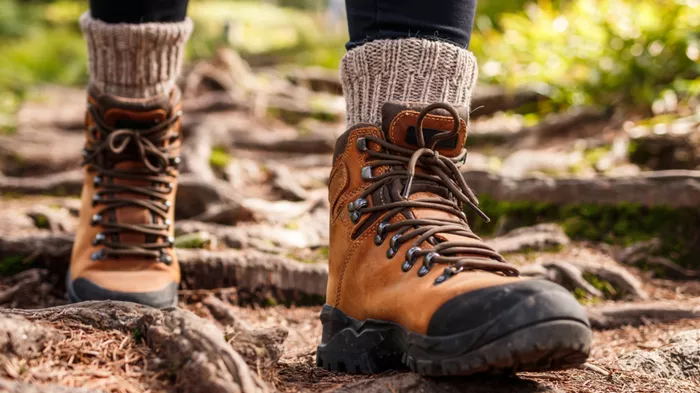When it comes to outdoor activities like hiking and running, having the right footwear is essential for comfort, performance, and injury prevention. While hiking shoes and running shoes may seem similar at a glance, they are designed with distinct purposes in mind. In this article, we’ll delve into the question of whether hiking shoes can be used for running, examining the key differences between the two types of footwear, exploring alternative options, and providing recommendations and tips for choosing the right footwear for your needs.
Hiking Shoes vs. Running Shoes: Key Differences
Before considering using hiking shoes for running, it’s important to understand the fundamental variances between these two types of footwear.
1. Weight and Flexibility: Hiking shoes are typically heavier and stiffer compared to running shoes. This added weight and rigidity in hiking shoes provide support and stability on uneven terrain, protecting the feet from rocks, roots, and other obstacles. In contrast, running shoes are designed to be lightweight and flexible, allowing for natural foot movement and efficient strides, especially on flat surfaces like roads or tracks.
2. Tread Pattern: The tread pattern is another distinguishing feature between hiking and running shoes. Hiking shoes feature deep lugs or treads that provide excellent traction on rugged terrain, such as trails and rocky surfaces. These lugs help grip loose soil and prevent slips and falls. On the other hand, running shoes typically have smoother treads optimized for pavement or track running, offering minimal resistance and promoting a smooth, continuous stride.
3. Cushioning and Support: Hiking shoes prioritize durability and stability, often incorporating ample cushioning and ankle support to withstand the impact of uneven surfaces and heavy loads. In contrast, running shoes focus on cushioning and responsiveness to absorb shock and provide energy return with each step. They may feature technologies like foam midsoles and heel counters designed to enhance comfort and protect against repetitive impact injuries.
Pros and Cons of Using Hiking Shoes for Running
While it may be tempting to use hiking shoes for running, there are both potential downsides and benefits to consider.
1. Potential Downsides: Using hiking shoes for running can pose several risks, including discomfort, blisters, and increased stress on joints. The heavier weight and stiffer construction of hiking shoes may lead to fatigue and reduced agility during running activities. Additionally, the deeper lugs on hiking shoes may cause instability or uneven pressure distribution on flat surfaces, increasing the risk of injury.
2. Possible Benefits: Despite the drawbacks, there are situations where using hiking shoes for running may be acceptable. For example, on well-maintained trails with minimal technical terrain, hiking shoes could provide adequate support and protection for short runs. Individuals with ankle instability or pronation issues may also benefit from the extra stability offered by hiking shoes during running activities.
Alternative Options
If hiking shoes aren’t ideal for running but traditional running shoes don’t offer enough support for rugged terrain, there are alternative options to consider.
1. Trail Running Shoes: Trail running shoes offer a middle ground between hiking and running shoes, combining features of both for optimal performance on varied terrain. These shoes typically feature durable outsoles with aggressive lug patterns for traction on trails, as well as lightweight construction and cushioning for comfort during long runs. Trail running shoes provide the protection and stability needed for off-road adventures while still offering flexibility and responsiveness for an efficient stride.
2. Minimalist Running Shoes: For those seeking a more natural running experience, minimalist running shoes offer a lightweight and flexible alternative to traditional cushioned shoes. These shoes promote a midfoot or forefoot strike, encouraging a more efficient and biomechanically sound running gait. However, it’s essential to transition gradually to minimalist shoes to avoid overuse injuries, as they provide less cushioning and support compared to conventional running shoes.
Recommendations and Tips
When choosing footwear for hiking or running, consider the following recommendations and tips:
1. Choosing the Right Footwear: Select footwear based on your intended activity, terrain, and personal preferences. For hiking, prioritize stability, durability, and traction, while for running, focus on cushioning, flexibility, and responsiveness.
2. Transitioning to Running Shoes: If transitioning from hiking shoes to running shoes, ease into the change gradually to allow your feet and muscles to adapt. Start with shorter runs and gradually increase distance and intensity over time. Pay attention to your running form and listen to your body to prevent overuse injuries.
3. Foot Care and Injury Prevention: Practice proper foot care, including keeping your feet clean and dry, trimming toenails regularly, and wearing moisture-wicking socks to reduce the risk of blisters and fungal infections. Additionally, incorporate strength and flexibility exercises into your routine to improve foot and ankle stability and reduce the risk of injury.
Additional Considerations
Consider the following factors when deciding between hiking shoes and running shoes:
1. Running Surface: The choice of footwear may depend on the surface you’ll be running on. If you primarily run on trails, opt for trail running shoes with aggressive treads for traction. For road running, choose lightweight and cushioned running shoes designed for pavement.
2. Running Distance and Frequency: While hiking shoes may be suitable for occasional, short runs, they may not provide the necessary comfort and support for frequent or long-distance running. Consider investing in dedicated running shoes if you plan to make running a regular part of your fitness routine.
3. Personal Preferences: Ultimately, the best footwear choice depends on your individual preferences, comfort levels, and performance goals. Experiment with different shoes to find the right fit for your unique needs and running style.
Conclusion
In conclusion, while hiking shoes can be used for running in certain situations, they are not ideal for long-term or high-intensity running activities. Consider alternative options like trail running shoes or minimalist running shoes for a better balance of comfort, support, and performance. Whatever footwear you choose, prioritize proper fit, durability, and functionality to ensure a safe and enjoyable running experience.

